THE COMEL AWARD FINALISTS 2013
Julia Brooker
Cardiff, GRAN BRETAGNA
www.juliabrooker.com
www.juliabrooker.com
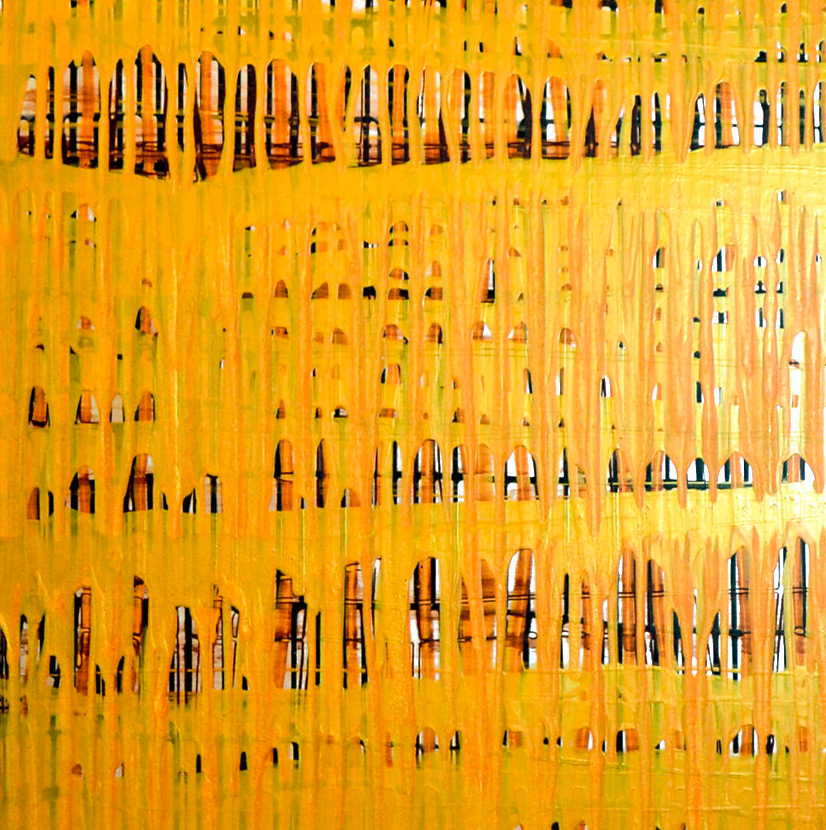
THE COMEL AWARD FINALISTS 2013
Julia Brooker
Cardiff, GRAN BRETAGNA
www.juliabrooker.com
www.juliabrooker.com
BIOGRAPHICAL NOTES
During the year 1999, Julia Brooker was seduced by the way aluminum reflects light off its surface, and through veils of transparent color she uses the fullness of paint to contrast the cool surface of the metal. For the last 12 years she has worked in the attempt to pervade her paintings of beauty, to satisfy the human need of the aesthetic sense.
Brooker passionately maintains the belief in the human need for beauty. She aspires to create what Arthur Schopenhauer describes as an aesthetic experience: “…is what happens when we see something beautiful … time standing still, that of the universal being perceived in the particular, and that of the spectator being taken out of himself and forgetting his own existence altogether in the rapt contemplation of what lies before us…”
She says: “I want my paintings to grasp the viewer; but also to be quiet and delicate. I don’t want everything to be seen from a distance. When the viewers come close I hope they will enjoy the tiny accidental droplets that fall, the craftsmanship of the paintings. Closeness should offer more, even a desire to touch the surface.”
She has held exhibition in many countries, especially in Europe and USA. Her paintings are part of prestigious private collections.
In 2014 Julia Brooker was personally committed against a EU ban which intended to prohibit the cadmium in acrylic colours, as it is a toxic chemical substance. As a matter of fact, cadmium is only present in very expensive and therefore not widely distributed colours. This reason, and also a stronger attention to other consuming product containing cadmium, along with other artists’ protest, prevented the ban enforcement.
ARTWORK IN CONTEST
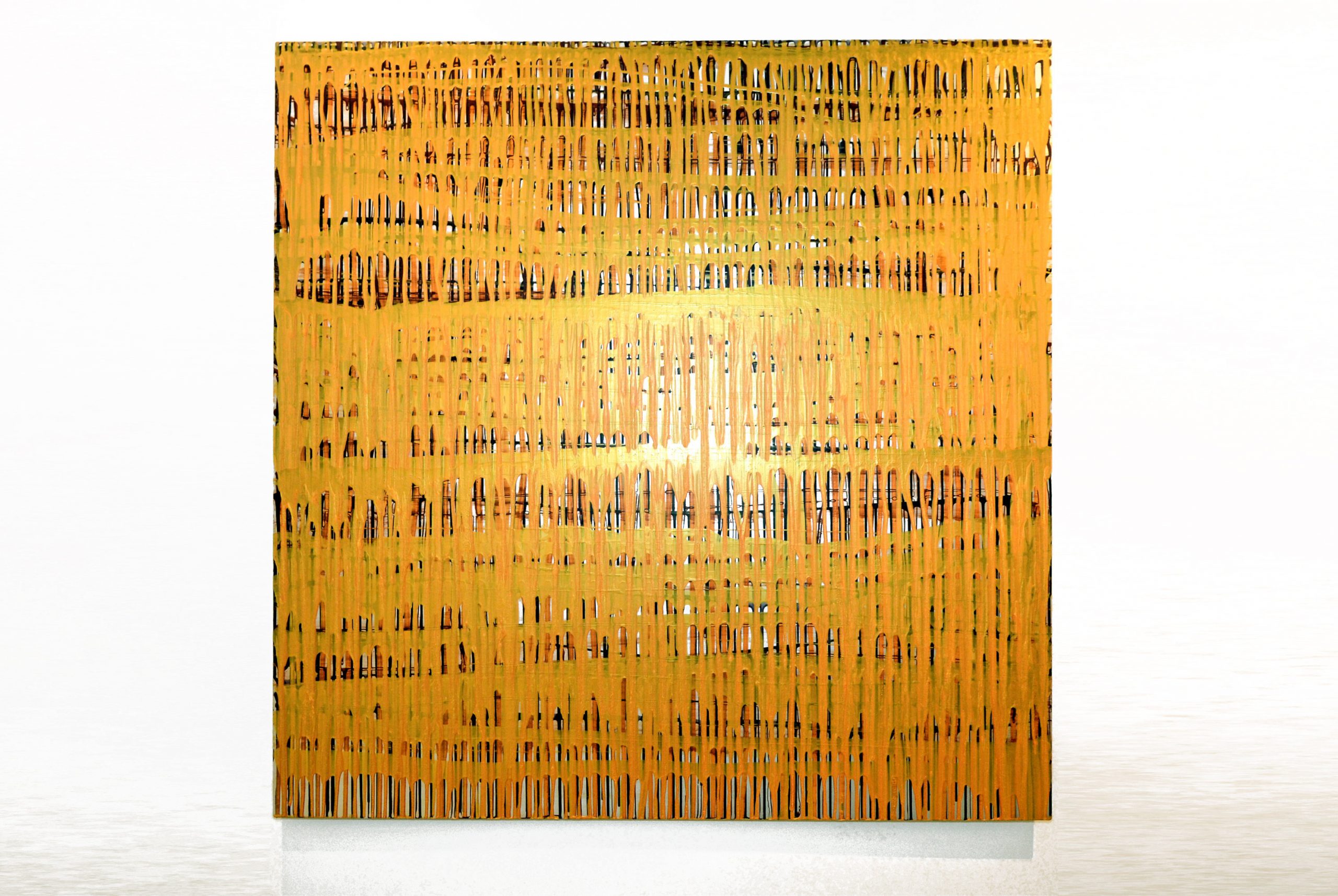
MASHARABIYA, 2011
PAINTING - acrylic on aluminum panel
cm 125 x 125
Julia Brooker worked the metal substructure obtaining a dense network of wires that brings imaginary textures to mind, with o psychological refined reference.
AWARDS
COMEL AWARD FINALIST 2013
INTERVIEW BY ROSA MANAUZZI
I make my paintings on aluminium because the metal surface reflects light. Like a child in a sweetshop the colour and sumptuousness of paint excites me.
During the year 1999, Julia Brooker was seduced by the way aluminum reflects light off its surface, and through veils of transparent color she uses the fullness of paint to contrast the cool surface of the metal. For the last 12 years she has worked in the attempt to pervade her paintings of beauty, to satisfy the human need of the aesthetic sense. Brooker passionately maintains the belief in the human need for beauty. She aspires to create what Arthur Schopenhauer describes as an aesthetic experience: “…is what happens when we see something beautiful … time standing still, that of the universal being perceived in the particular, and that of the spectator being taken out of himself and forgetting his own existence altogether in the rapt contemplation of what lies before us…”
She says: “I want my paintings to grasp the viewer; but also to be quiet and delicate. I don’t want everything to be seen from a distance. When the viewers come close I hope they will enjoy the tiny accidental droplets that fall, the craftsmanship of the paintings. Closeness should offer more, even a desire to touch the surface.”
She has held exhibition in many countries, especially in Europe and USA. Her paintings are part of prestigious private collections. In 2014 Julia Brooker was personally committed against a EU ban which intended to prohibit the cadmium in acrylic colours, as it is a toxic chemical substance. As a matter of fact, cadmium is only present in very expensive and therefore not widely distributed colours. This reason, and also a stronger attention to other consuming product containing cadmium, along with other artists’ protest, prevented the ban enforcement.
In your artist’s statement you declare you chose aluminum because you have been seduced by the way it reflects the light through transparent veils of colours. Could you tell us shortly your artistic path explaining the seduction of aluminum? Do you remember the exact moment?
Yes. It was in Sept 1999 seeing ‘Crespo’ the painting by Jason Martin in the Lisson Gallery in London. I was in my final year at art college. He had created an optical illusion, the painting was like a hologram, it appeared to give out light. Iridescent metallic blue paint, had been applied in fine horizontal grooves across the square aluminum panel. The undulations in the grooves made ‘Crespo’ appear to belly out. I could hardly believe my eyes and I really wanted to touch it to see if it was flat.
According to Schopenhauer, a philosopher you admire, the aesthetic experience consists, among other things, of being out of the ordinary prison in which we live. Yet the art is becoming more and more a ‘consumer good’, although it does not mean that it is sought after and appreciated by the masses. The collector seeks the work of value in which to invest, while the mere spectator hardly visits an art exhibition. What should the artist do to increase the aesthetic experience, to make it affordable for more people?
Visiting exhibitions as I do is an affordable way to see good art. And the very best stays with you for years afterwards. Luckily for the public, most artists are not in the elite who can command very high prices.
The sharing of emotions between artist and viewer really matters to you. Is there a way of establishing this precious communication of senses?
Not for certain. Many people think music for example is much more direct way to affect people’s emotions. As an artist, you can simply hope that what you make creates a feeling in another. You are unlikely to know if you have succeeded.
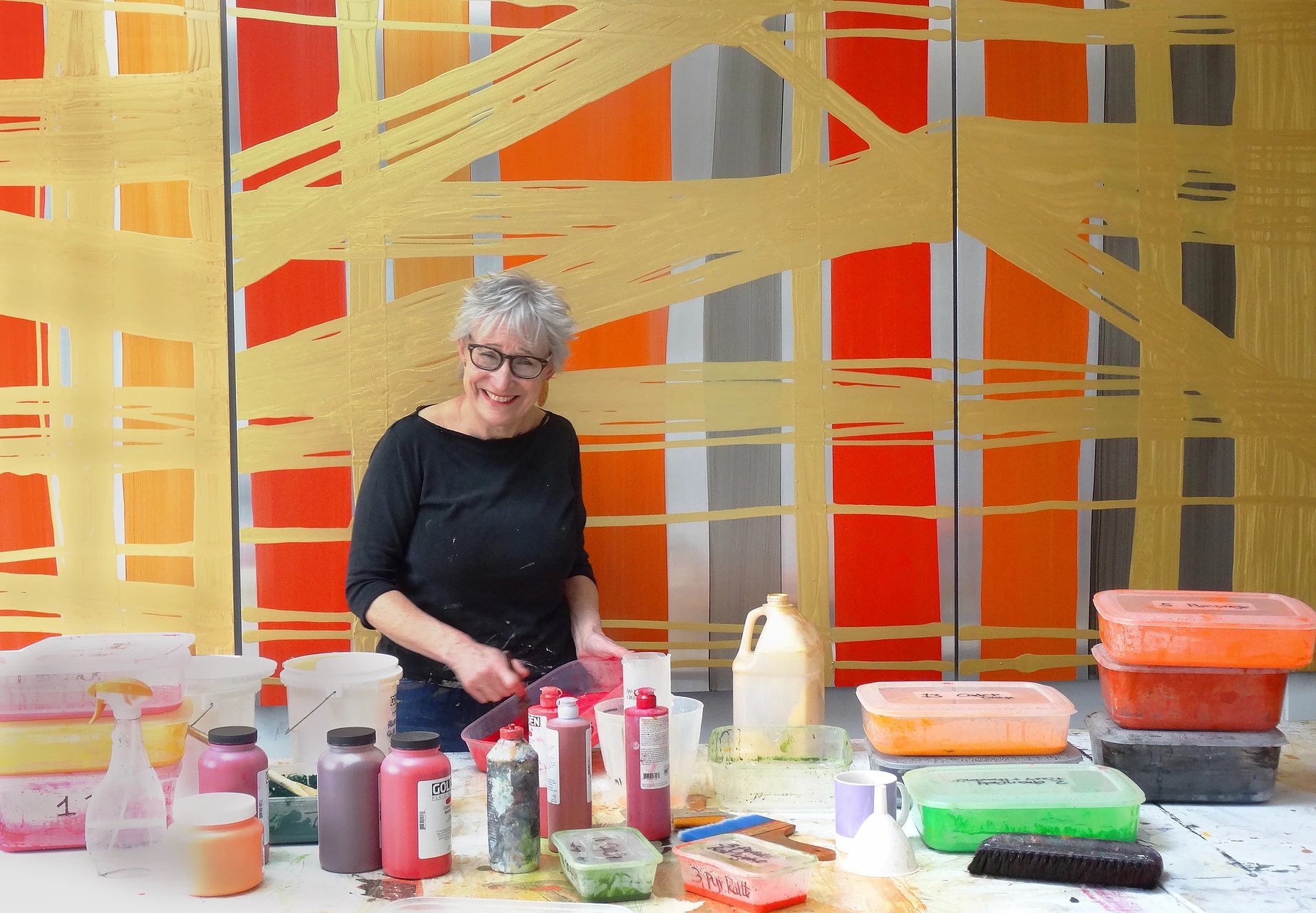
Julia in her studio
Art may help to create beauty and beauty may help to restore humanity to human beings. Do you agree with this remark? We live in a world that chases the selfish profit, people do not have much time to stop and look and think, and the beauty is likely to be trivialized with surface images (beautiful bodies, passing fads). Art may improve the world if brought to the places where it is least expected. Where would you take it to satisfy this goal?
That is a very difficult question. I think the main ingredient for quietly enjoying art is a state of mind that has slowed down enough to want to look thoughtfully. That may be hard to find in an age that requires rapid satisfaction.
You describe your studio as a theatre where you are the director. Which are the characteristics of a high quality artistic performance?
Feeling confident, not worrying about the end result, really wanting to make an idea become real. It is paradoxically also very private and self-absorbed. No music, no nothing, just me and the paint, all else disappears.
The line represents your most representative feature, especially the horizontal line. The ordered distance of the lines, their fullness, seem to announce a narrative text to follow closely, from left to right. Your style recalls a writing to follow calmly and carefully. It is a writing that evokes stories along lines traced with the acrylic, but the work is also composed by pauses, distances between a line and the other, cavities in which something hides. And in this pause, or distance, a further story lies. There is a double communication channel within which there is the artist’s message and even the ability of the viewer to enter your story, or simply asserts his presence as observer. Your challenge is communicative, there is a dialogical relationship sought in every picture.
There is also a communication with the world, seen spatially, with the line that is also a distant horizon, repeated on the aluminum plate, as if you wanted to make it more familiar every time, closer, more understandable. I made the ‘Journal’ series a few years ago and that was made from left to right and came from times when I have written diaries to record my innermost feelings that I could not share. ‘Injury Time’ was made when I was thinking about the folk stories of the prisoners who mark out their time on a wall.
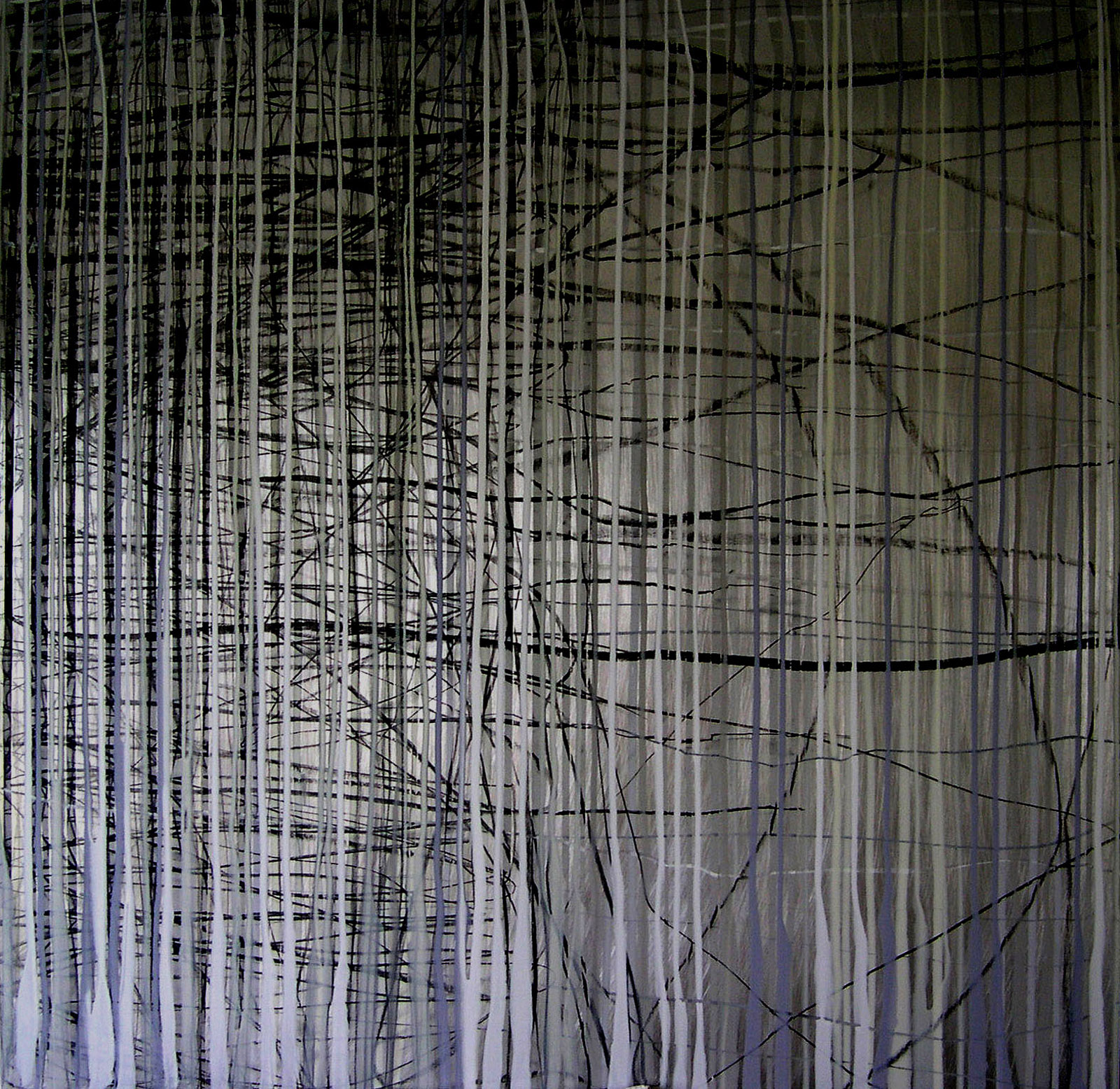
Forest II
Acrylic colour seems to be your favourite choice to ‘write’ on the aluminum plate. Which is the specific feature that made you choose it as a special medium?
At art college, I used oil paint at first because I thought only oil paint gave high quality colour. I was wrong, it is simply that the acrylic paint I had tried was cheap and poor quality with low saturation of colours. I like the immediacy of acrylic, it dries quickly and I like to add separate layers, and not have them mixed together as you would with oil.
You consider the light as a crucial element, not only for your works. This is why you also collaborate with designers of light, such as Simon Morris Associates, to enhance exhibitions of works made mainly on aluminum panels. What is the show that you were particularly happy to valorize?
Good lighting is crucial; its lack can ruin a good painting. The best lit exhibition I have seen was Howard Hodgkin at the Hayward Gallery. The large rooms had no windows and the light level overall was low. The colourful paintings were framed and fairly small. The walls were painted mid grey. Each painting was lit in its own individual beam of light. It was done exquisitely. The paintings were like jewels on grey velvet. Beautiful.
In 2013 your work ‘Masharabiya’ was selected for the COMEL Award, a contemporary art prize that is more and more important in the international scene and unique in its kind for the choice of works in aluminum or on aluminum. Could you tell us something about this work and how important was the experience of taking part in the contest?
The painting was inspired by seeing mashrabiya in the Middle East. They are traditional dark wood screens pierced with geometric patterns. I saw bright daylight streaming through these little windows. That inspired me to make my ‘Mashrabiya’ painting with its structure of rows of little arches made with light grey and chocolate brown. Gold paint was poured over the painting. Where the aluminum was unpainted there were little windows of light reflected off the aluminum. I was delighted to be selected and very much enjoyed visiting Latina and attending the preview of the exhibition.
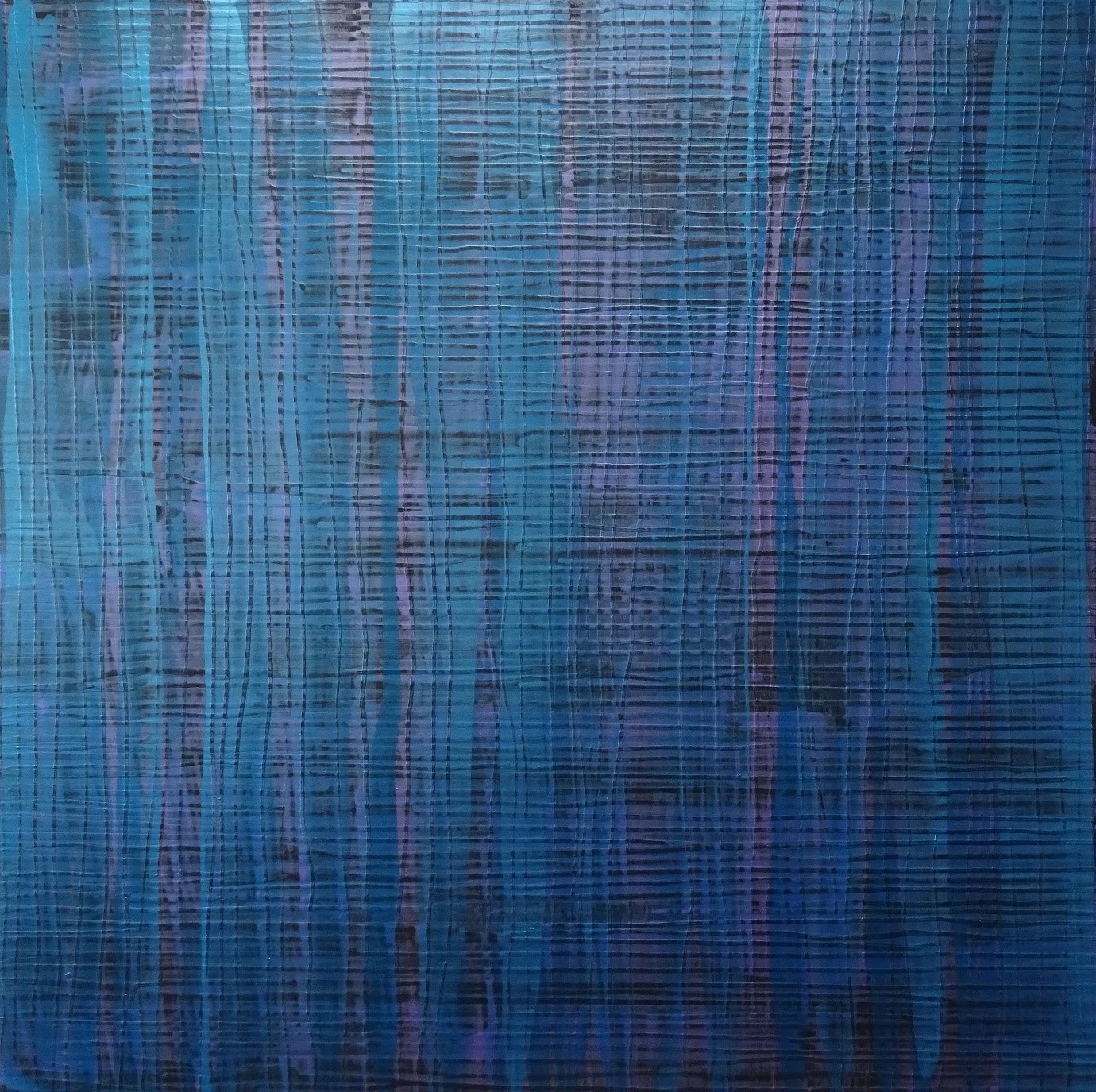
Twilight
Your works are wanted in any place in the world. Beyond the aesthetic value, what do you like to export when selling them? Which messages do you aim at conveying?
I hope that my paintings will encourage passers-by to stop a while and quietly look and hopefully enjoy it. Ideas of beauty change but I hope people will find them beautiful.
Let’s conclude with a personal fight you engage. In 2014 you were against a EU ban which intended to prohibit the use of cadmium, as it is a very polluting substance. It is precious in the colours great artists used in the past and you also use. Cadmium is only used by professional artists as it is present in very expensive pigments. You were really a champion of this fight and in the end, you won.
Cadmium can be toxic if consumed in quantity. Some industries use it at a large scale; but artists’ use is comparatively very low. I supported this campaign because purity and saturation of colours are important to me and my work and cadmium is an excellent, probably the best, source for brilliant reds and yellows. Fortunately, the EU accepted that argument.

